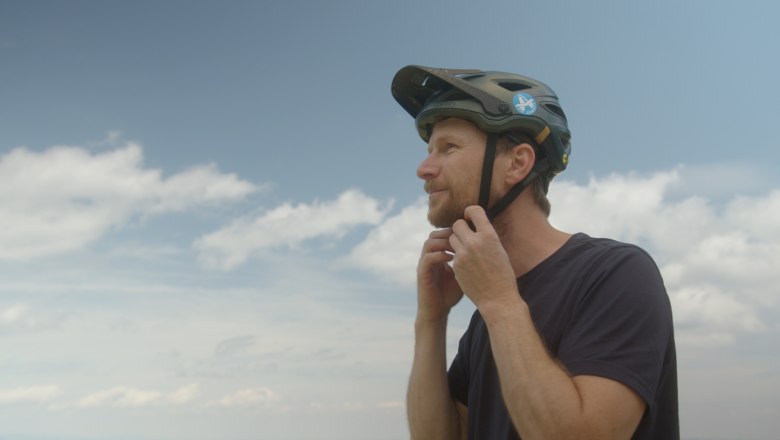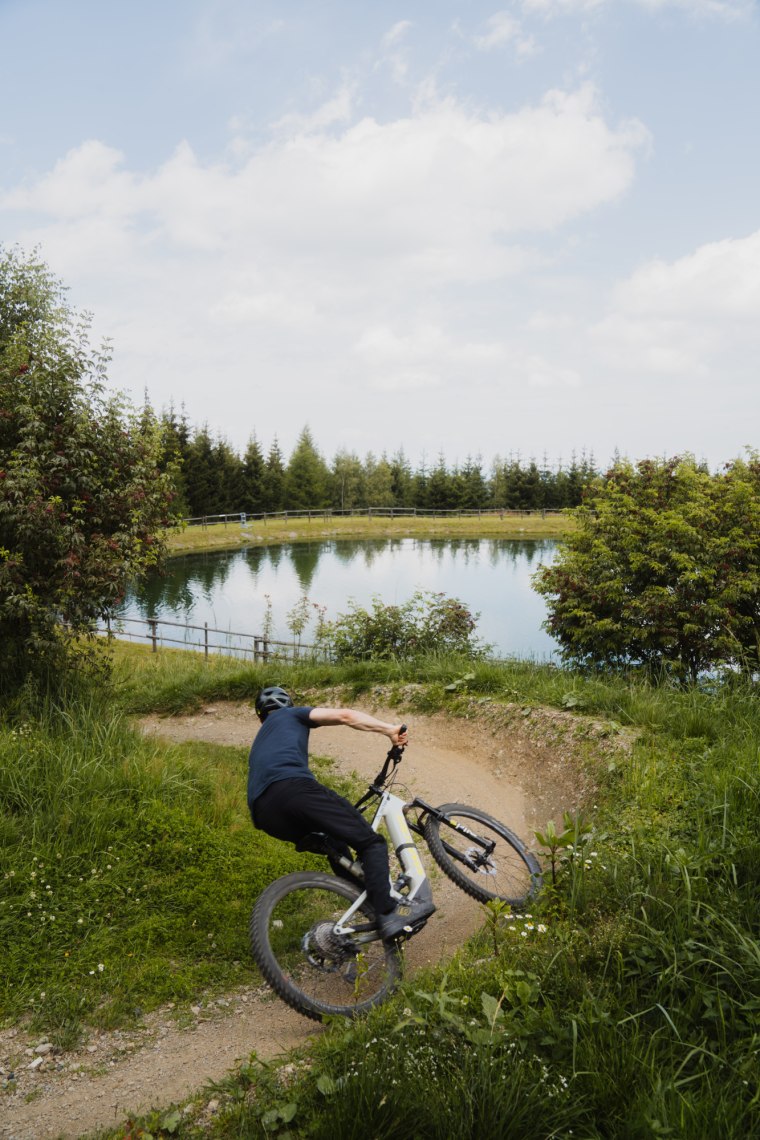Trail building like the masters
The Wexl Trails in St. Corona am Wechsel are a masterpiece in terms of both fun and adventure and in terms of a nature-friendly bike park.
"The design decides the use", says Philipp Wiedhofer as he works a reddish-brown mound with a spade. But Wiedhofer is not a garden or green space designer, he is a landscape planner with a special focus - he builds trails. Not for hikers or trail runners, but for mountain bikers.
His decades of experience and lifelong passion for cycling away from concrete roads have made him the trail designer of a trail park in southern Lower Austria - the Wexl Trails in St. Corona am Wechsel. Over 70 km of trail landscape have sprung from the imagination of the 40-year-old Lower Austrian. We visited him at his workplace of steep turns, jumps and bumps and asked him how to build a flowing trail, what is important when designing a sustainable bike park and why safety does not necessarily mean less fun.
Philipp, how and when did it all start with the Wexl Trails?
It all started in 2016: I had quit my job as a trail designer at Bikepark Semmering after more than ten years and had just returned from a trip to New Zealand when I got a call from my long-time friend and now managing director of Wexl Trails, Karl Morgenbesser. He was like, "There's something happening up at am Wechsel and I'd like you to be there".

That was after the St. Corona am Wechsel ski resort was closed?
Exactly, lift operations had already ceased, but the infrastructure of the ski area was still in place. Besides the conveyor belt and the button lift, there were also plenty of hotels, restaurants and inns - but the tourist perspective was missing! So we came up with a master plan.
In which the Wexl Trails have already played a leading role?
At the beginning, only a mini bike park for children with two trails as well as the summer toboggan run, a motor skills park and an adventure playground were planned. Of course, in our minds we were already thinking further ahead - the scenic potential for an extensive and, above all, high-quality trail centre was completely obvious to me.
However, the realisation of such large-scale projects requires the consent of countless stakeholders,
and we were able to convince them of the plausibility of our concept. Not least because all decision-makers wanted to pull together to make something happen in the region - from the municipality to the landowners and forestry companies to the hunters. The economic benefits of the project were obvious to all, as was its ecological compatibility. We did not place massive routes in the landscape, but rather made gentle interventions - the sustainability of the trails was an important concern for us. We didn't want to build hardcore downhill trails, but flowing and above all safe trails.


How exactly do you design a trail where you really pick up speed and are still safe on the road?
By braking as little as possible throughout the trail and at the same time hardly having to pedal! The slope is crucial for this: if the trail is too steep, a lot of braking takes place and the ground material is torn up. This creates holes and gullies where the water can no longer seep away, making the route unrhythmic and ultimately dangerous. You just need a lot of experience in trail building and a good eye for the terrain. With the Wexl Trails, we have succeeded in creating a bike park that is rideable for everyone - our trails are fun without having to take any risks. This is exactly the message we wanted to get out into the region.
40,000 first-time admissions per year speak for the fact that your message has been heard.
And that makes us very happy! But we mustn’t forget - we have grown slowly and healthily. In 2016 the mini bike park, in the following year the first single and flow trails, and in the following season the alliance with Mönichkirchen, Mariensee and St. Corona am Wechsel, in the course of which the panoramic trails on the alpine pastures and around the Hochwechsel summit peak be opened - a milestone in regional development! For the first time, mountain biking was legally possible in the Wechselland region without having to interfere with nature to any great extent. We merely adapted and signposted forest and alpine paths.
What about the future of the Wexl Trails? What’s next?
Two years ago, we expanded our offer with a jumpline, the mountain downhill bike trail and a nimble downhill course. Transport no longer takes place with shuttles, but with a bike lift based on the winter drag lift. Renovation work on existing trails and a connecting route from the Wexl Lounge to Aspang are scheduled for this year. A merger with Kirchberg is also being planned and if all goes well, we will establish a connection to Styria from Hochwechsel before the end of this season - that would be an increase in trails of over 30 kilometres.
